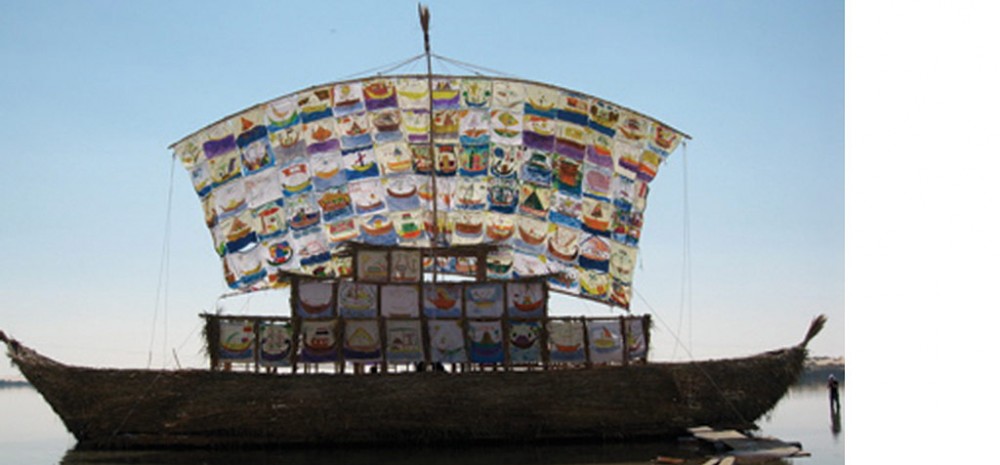Siwa 2005
The project proposes the construction of an ancient Egyptian ship of rather inspiring dimensions 20 x 7 meters with a mast height of 13 meters and its subsequent launching into the water. Moreover, the children of the surrounding schools will have the most direct participation in the preparation of the ship.
1. The them “Ships and Boats of Ancient Egypt is to be introduced into the curriculum of Siwa schools for the spring of 2005. The teachers will show slides depicting ancient vessels, they will explain their construction and purposes, and will assign the task of drawing them, either by copying these depictions or by improvising on this same theme.
2. After this preliminary preparation, it will be announced to the children in the summer that a ship is to be built on the shore and that each schoolchild needs to draw a picture to be used in decorating the ship. In school, the children will be provided with white, rose, and blue pieces of synthetic fabric of two sizes: 100×84 cm, and 110x110cm. Wooden rods are run through the top and bottom of each pieces that will help both the stretch the fabric on the wall to make is easier for the children to drawn on it, and also then to make it possible for using the drawings on the ship. All the schoolchildren must have paints and brushes, and the work should look like a free improvisation either on the theme of Boats and Ships or on anything they wish to depict.
3. Two weeks before the launch, a group of builders will arrive to erect the carcass of the ship from bamboo and the attach this carcass to a raft (also bamboo). Inflated pontoons are placed under the raft so it will float. The entire construction process takes place on the shore near the lake, so that both children and adults can watch this ship being created from day to day.
4. After the carcass has been built, it will be time to attach the children’s drawings to it. The drawing are stretched between the sticks of the carcass, forming the port and starboar sides of the decks (see sketch). The sail is also fabricated from the drawings. 3-4 days will be necessary for each of these stages, with the children’s participation during this entire time.
5. Since a Ship of Antiquity is being built, it would be nice if the clothing of the children and of the builders resembled that worn 2500 years ago.
6. The celebration of launching the ship needs to be scheduled for the latter part of the day. This is because many candles in metal boxes will be placed on the main and two other decks, and these will illuminate from below the entire construction and the sail after the launch.
7. The launch into the water is the central performance of the entire project. Music, dances, etc. still need to be considered for the time prior to the moment when all the participants, in a state of general rejoicing, drag the ship to the water, having placed long poles under the raft.
8. If there is wind, then the ship should slowly sail away into the night, glowing with the candlelight, until it is out of sight. Ideally an adult should be on the ship in order to steer and direct the sail, and he should sail either to the other side of the lake, or he should dock in a place no far from where the ship was constructed.
9. After the ships arrival back to shore, perhaps on the next day, it can be again dragged out of the water, all the drawing can be removed to be preserved in the schools, and the carcass can remain on the shore forever as a reminder of the happy celebration and the magical encounter between the children and their magnificent past.
Emilia and Ilya Kabakov
